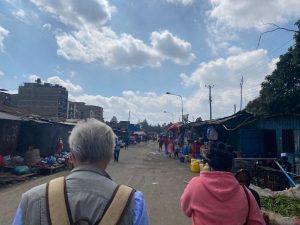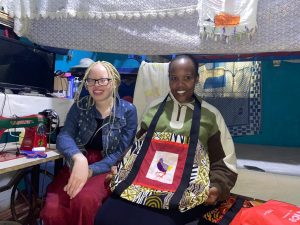Few people are familiar with Nairobi, let alone its informal settlements (or “slums,” what have you). For those who do have some knowledge of Nairobi, it’s likely they’ve heard of Kibera. Famously known as the “biggest slum in Africa,” this informal settlement has a population of a quarter of a million people. Its homes are constructed out of sheet metal and mud, and its residents lack any sort of formal rights to their land. Many of these families have been essentially “squatting” on the land for generations.
What many people fail to realize, however, is that Nairobi has over 150 informal settlements, all without government services. Kibera, as the settlement with the biggest population, naturally attracts attention from foreign donors. Over 300 NGOs are currently operating in Kibera.
Compare this to the informal settlement of Huruma, and the picture is vastly different. Between 2000 and 2020, population density in Huruma increased faster than in Kibera with 766.98 residents per hectare compared to 475.27. The result of this surge in population density is overcrowding in Huruma’s decrepit multi-story cement buildings, where families fill single-room homes with no running water. Arguably, these housing structures are more dangerous than the single-story sheet metal homes constructed in Kibera. In 2016, an apartment building in Huruma collapsed, killing 52 people. The building owner had rented out 100 rooms, even though the government declared the building unfit to live in. This is all to say that in Nairobi’s other informal settlements, living conditions are just as bad, and in some cases even worse. Yet, they fail to attract a fraction of Kibera’s donor attention.
Having lived in Huruma for 10 years, Shield of Faith member Ruth occupies a small one-room apartment with her children. On Sunday, Ruth invited me, Stella, and AP’s Executive Director Iain into her home and shared her story with us. Upon entering the building, we each had to turn on our phone flashlights to navigate the dark and narrow stairwell up to the fourth floor. Every day, Ruth walks up and down these stairs carrying 20L containers of water, which she has to purchase for 10 Kenyan shillings, the equivalent of 7 US cents. She admitted that it was a hard life, but she was grateful to us for coming to witness her everyday experience. I will forever be grateful to Ruth and her daughter Sharon for opening their hearts and their home to us.
While not each of Kibera’s 300 NGOs is efficient (I’ve heard complaints that they aren’t), the fact that they’re there says something. These NGOs have the potential to impact the lives of someone like Ruth, but we won’t know until or unless something changes about the NGO landscape across Nairobi’s informal settlements.
Posted By Caitlin Mittrick
Posted Jul 11th, 2023




1 Comment
Iain Guest
July 12, 2023
Really good post, Caitlin! I was with you on this interesting visit to Ruth and you’ve added some really good research to show how amazingly vulnerable people are in the informal settlements. These apartments are anything but safe and solid. and this makes it even more amazing that they are so committed to composting. You’re painting a really good picture of the project.